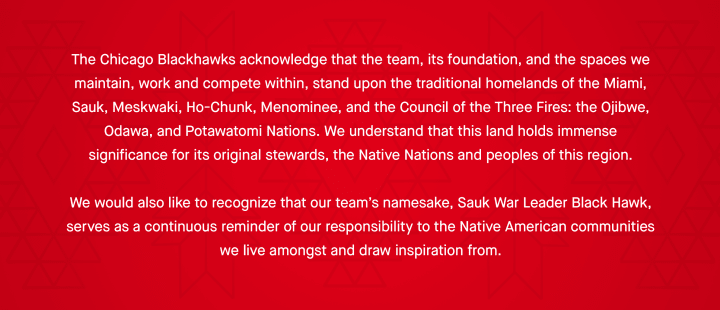The Chicago Blackhawks continue to grow in our commitments to honor and celebrate Black Hawk's legacy by offering our platforms, making meaningful contributions, collaborating with Native American people, and reimagining ways to support the many Native American people and communities we live amongst and alongside.
As we to look to expand our efforts, we will continue our genuine dialogue with local and national Native American groups and are committed to collaborating with Native American people and communities. It is through these collaborations that we've begun the thoughtful and focused process of implementing more Native American-led initiatives centered on education, contemporary art, athletics and more, and this expanded foundation will continue to grow moving forward.
Part of this work includes working with Native partners in educating our staff, fans and local community on the history of Black Hawk and original peoples of Illinois, as well as on Native American contributions to today's society. We also continue to expand our investments in Native individuals and communities. Through these initiatives, we endeavor to build a community that is informed and respectful of Native American people and their culture.
We look forward to getting these efforts further underway and hope our fans and partners will join us in continuing this growth and development as we work toward becoming better allies.









